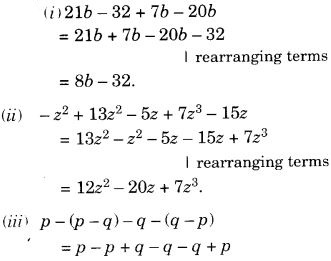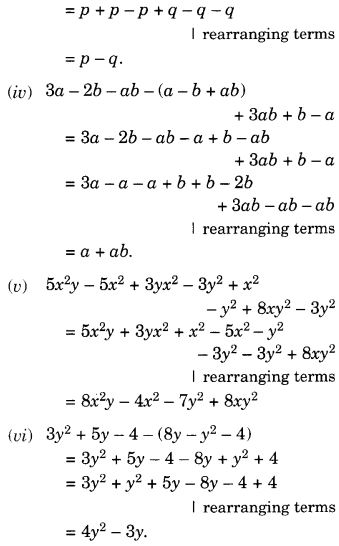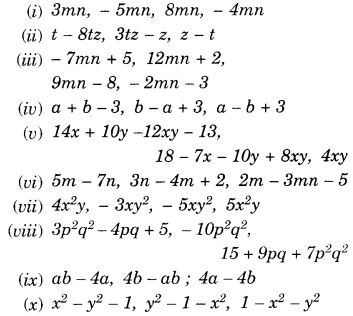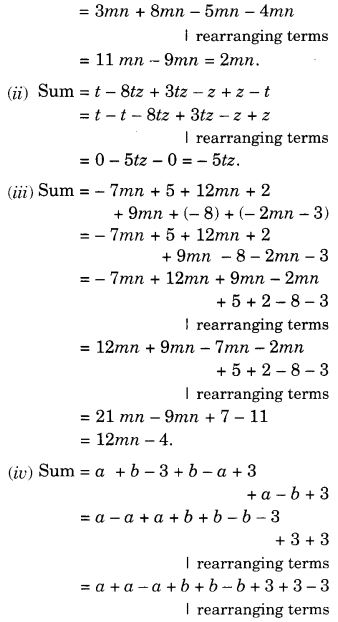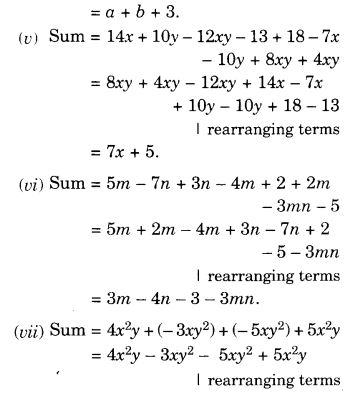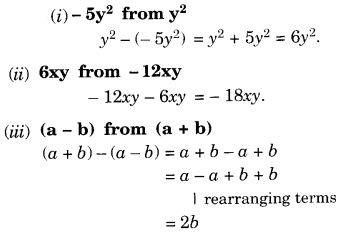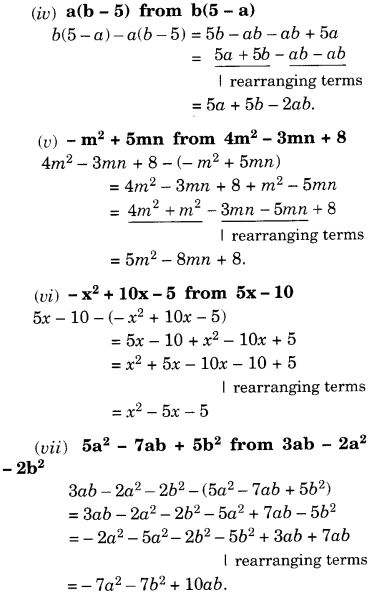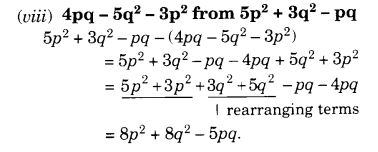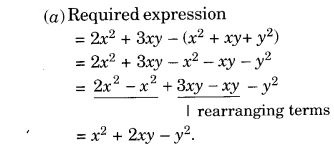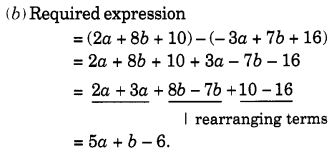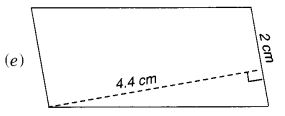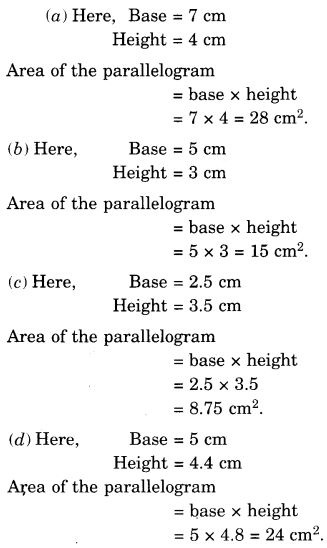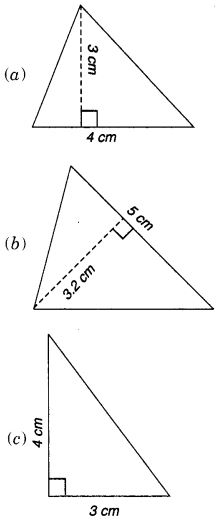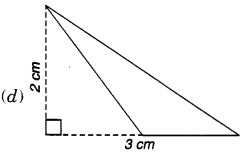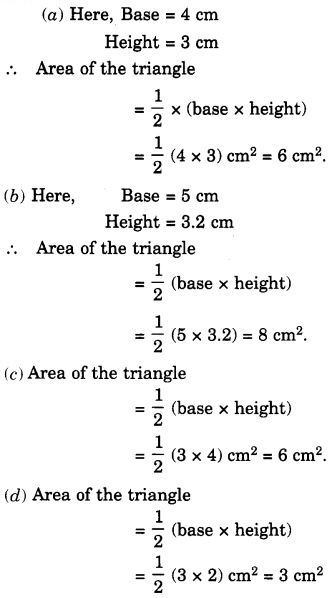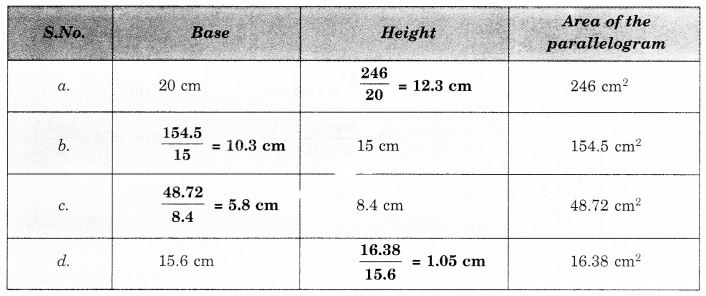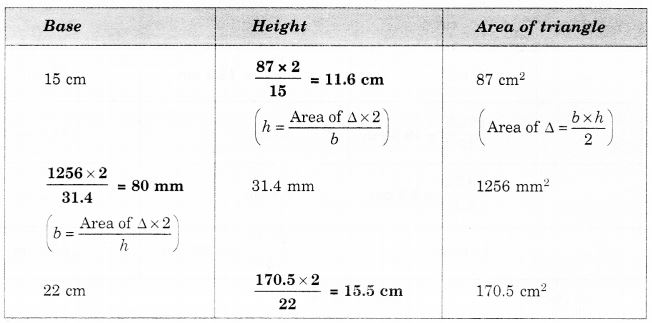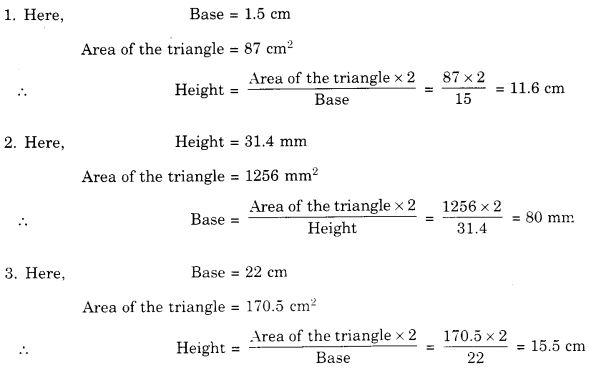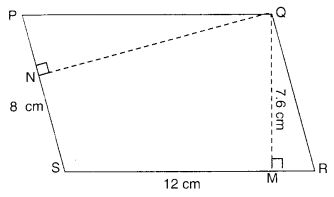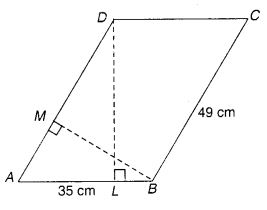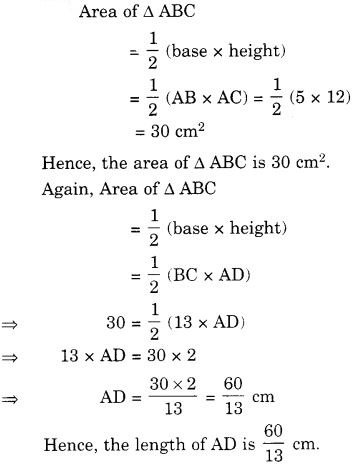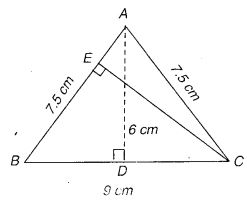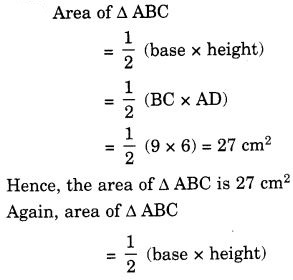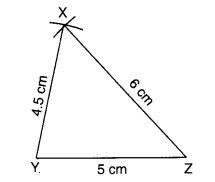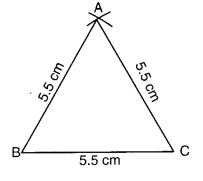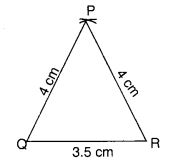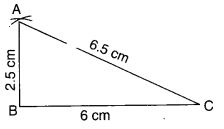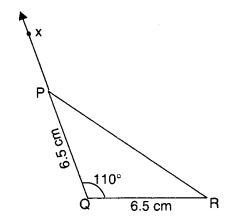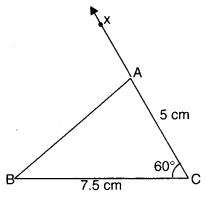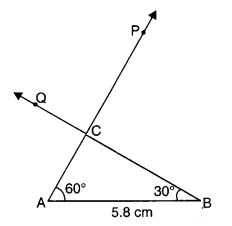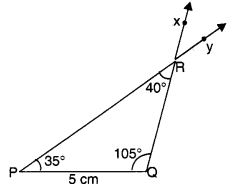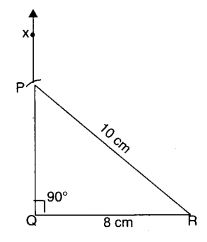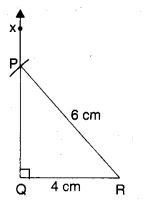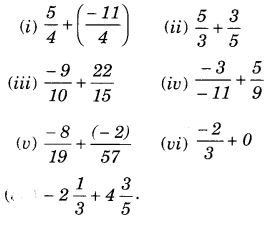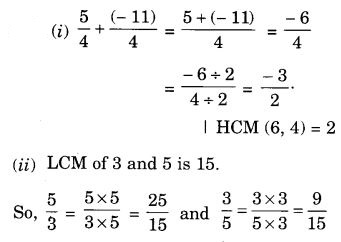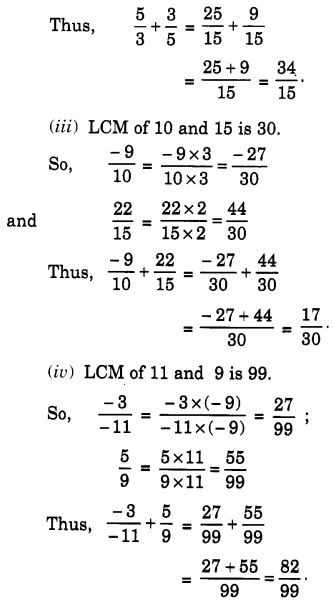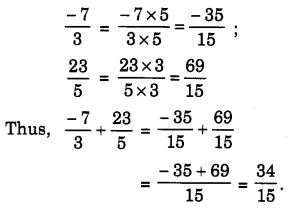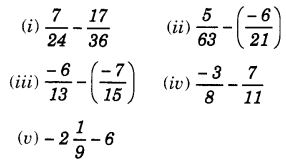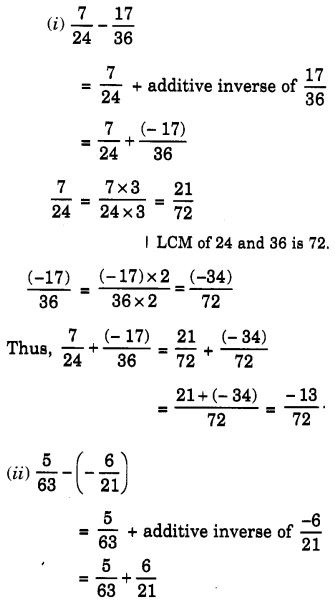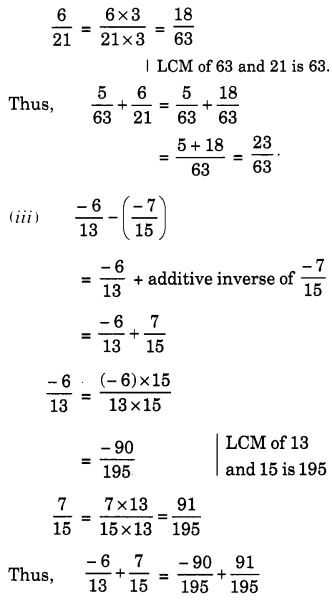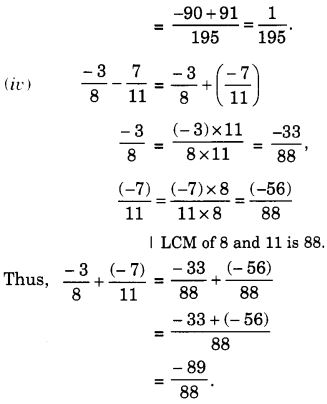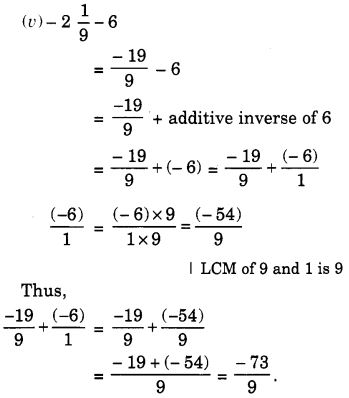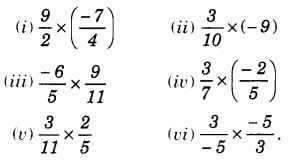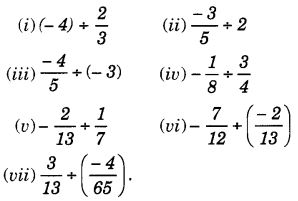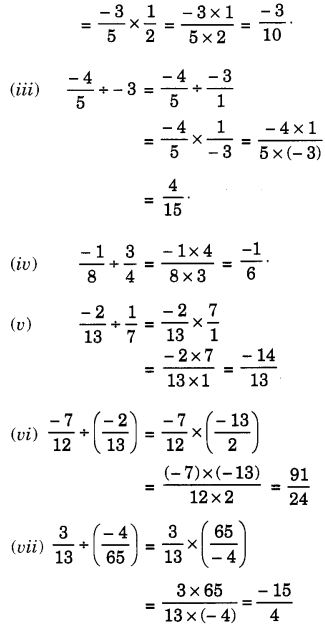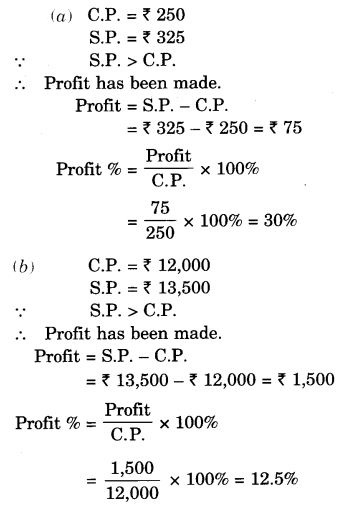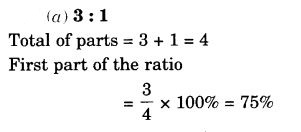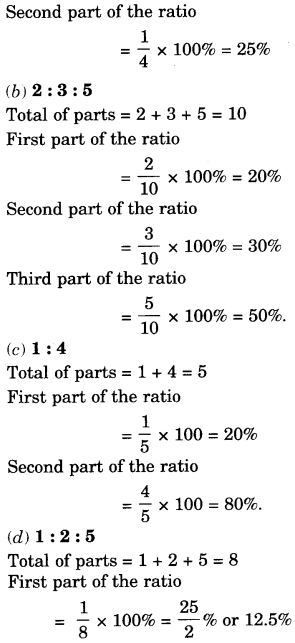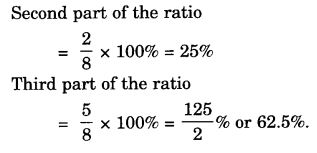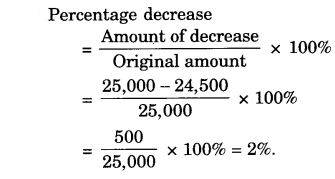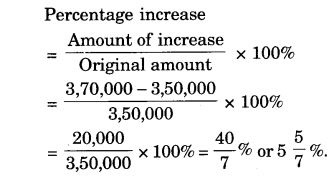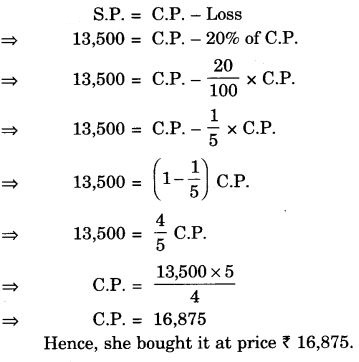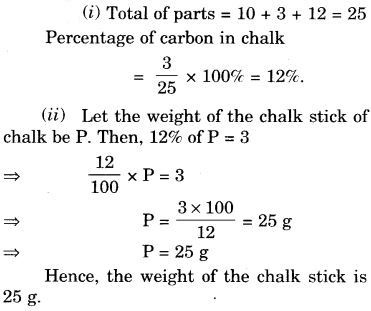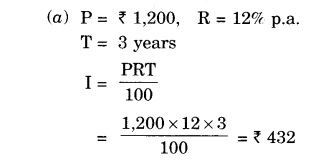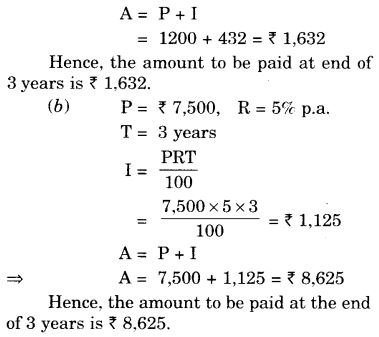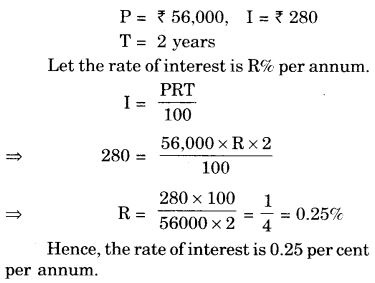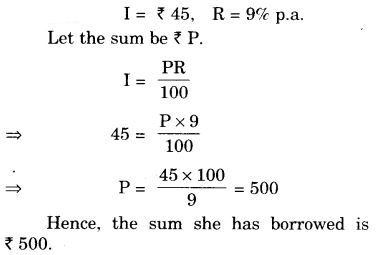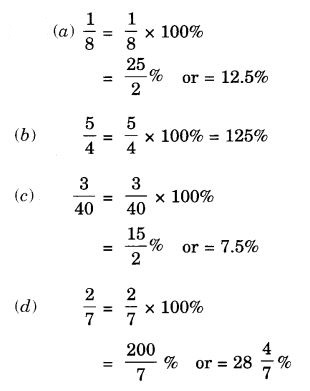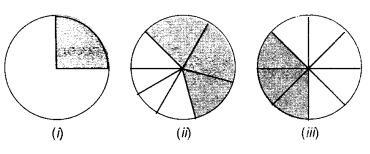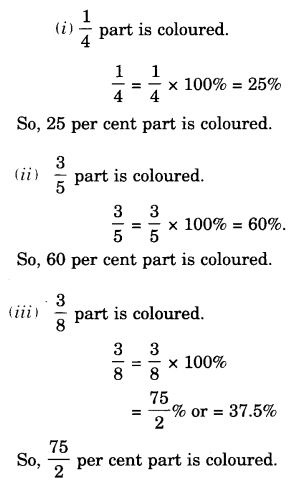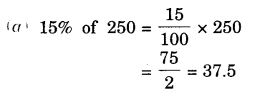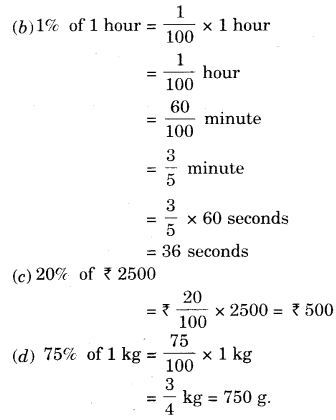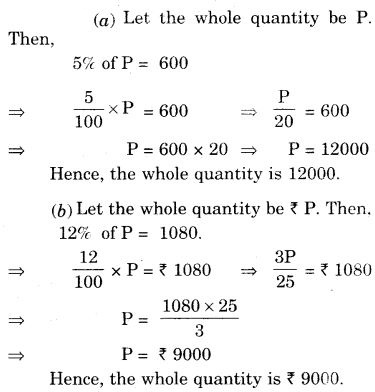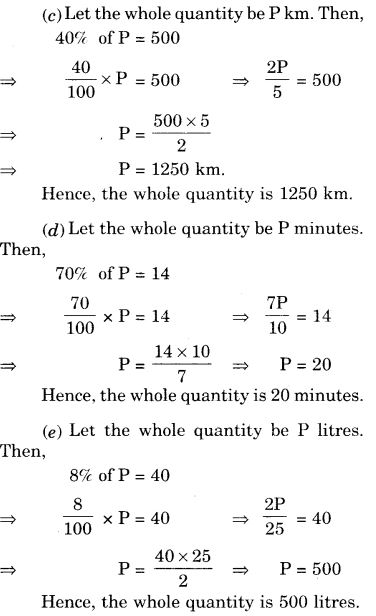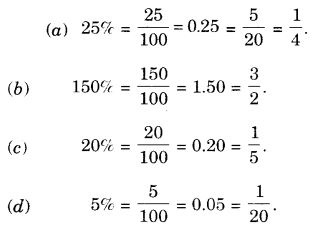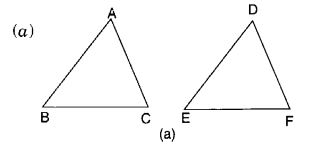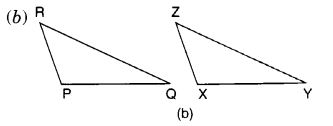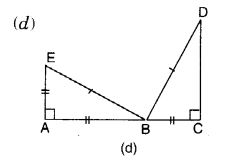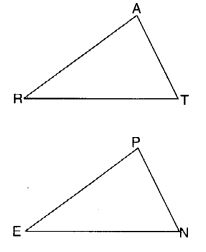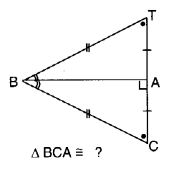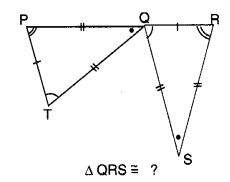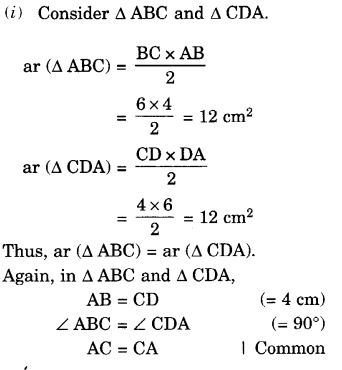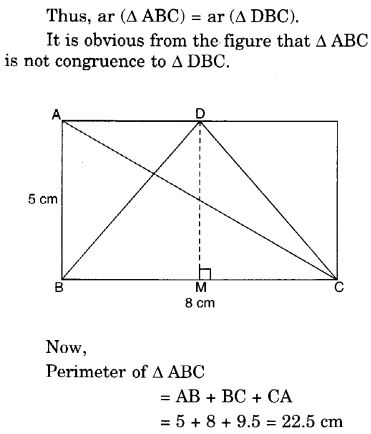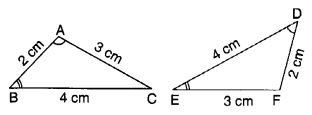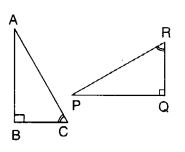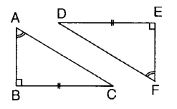NCERT Solutions for Class 7 Maths Chapter 12 Algebraic Expressions Ex 12.3 are part of NCERT Solutions for Class 7 Maths. Here we have given NCERT Solutions for Class 7 Maths Chapter 12 Algebraic Expressions Ex 12.3.
- Algebraic Expressions Class 7 Ex 12.1
- Algebraic Expressions Class 7 Ex 12.2
- Algebraic Expressions Class 7 Ex 12.4
- Algebraic Expressions Class 7 MCQ
| Board | CBSE |
| Textbook | NCERT |
| Class | Class 7 |
| Subject | Maths |
| Chapter | Chapter 12 |
| Chapter Name | Algebraic Expressions |
| Exercise | Ex 12.3 |
| Number of Questions Solved | 10 |
| Category | NCERT Solutions |
NCERT Solutions for Class 7 Maths Chapter 12 Algebraic Expressions Ex 12.3
Question 1.
If m = 2, find the value of :
- m – 2
- 3m – 5
- 9 – 5m
- 3m2 – 2m – 7
- \(\frac { 5m }{ 2 } \) – 4
Solution:
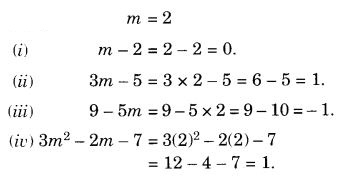

Question 2.
If p = – 2, find the value of :
- 4p + 7
- – 3p2 + 4p + 7
- – 2p3 – 3p2 + 4p + 7.
Solution:
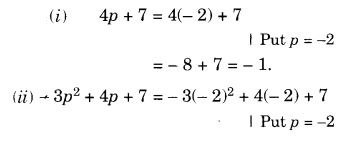

Question 3.
Find the value of the following expressions, when x = – 1 :
- 2x – 7
- – x + 2
- x2 + 2x + 1
- 2x2 – x – 2.
Solution:
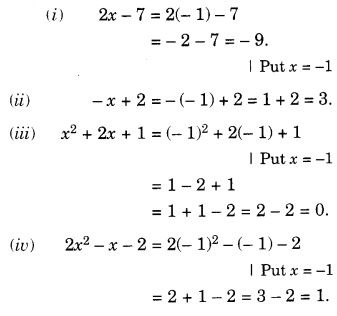
Question 4.
If a = 2, b = – 2, find the value of :
- a2 + b2
- a2 + ab + b2
- a2 – b2.
Solution:
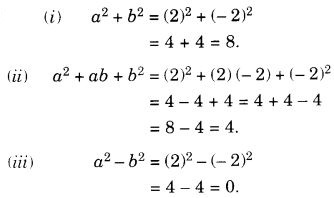
Question 5.
When a = 0, b = – 1, find the value of the given expressions :
- 2a + 2b
- 2a2 + b2 + 1
- 2a2b + 2ab2 + ab
- a2 + ab + 2.
Solution:
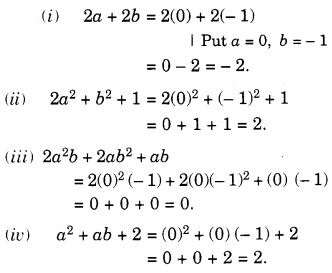
Question 6.
Simplify the expressions and find the value ifx is equal to 2.
- x + 7 + 4 (x – 5)
- 3 (x + 2) + 5x – 7
- 6x + 5 (x – 2)
- 4 (2x – 1) + 3x + 11.
Solution:
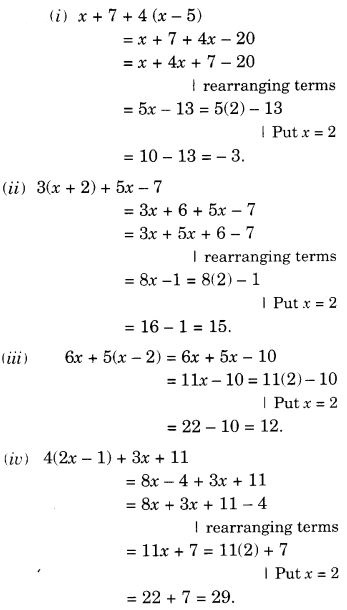
Question 7.
Simplify these expressions and find their values if x = 3, a = – 1, b = – 2.
- 3x – 5 – x + 9
- 2 – 8x + 4x + 4
- 3a + 5 – 8a + 1
- 10 – 3b – 4 – 5b
- 2a – 2b – 4 – 5 + a.
Solution:
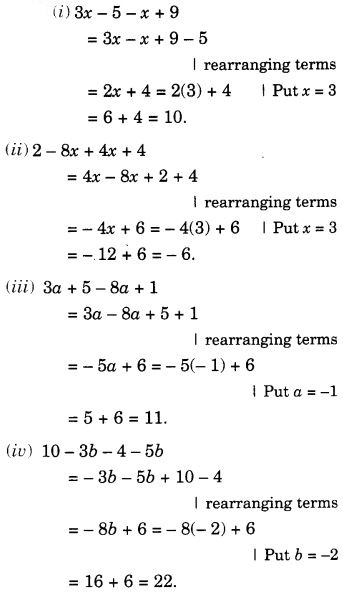
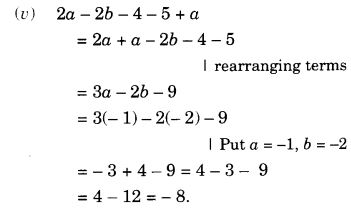
Question 8.
(i) If z = 10, find the value of z3 – 3(z – 10).
(ii) If p = -10, find the value of p2 – 2p – 100.
Solution:
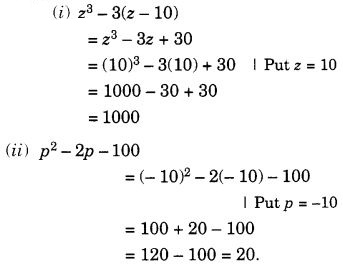
Question 9.
What should be the value of a if the value of 2x2 + x – a equals to 5, when x = 0 ?
Solution:
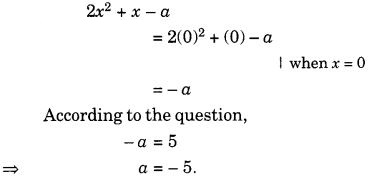
Question 10.
Simplify the expression and find its value when a = 5 and b = – 3 2(a2 + ab) + 3 – ab.
Solution:
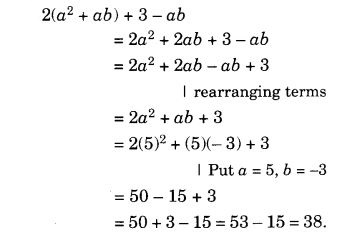
We hope the NCERT Solutions for Class 7 Maths Chapter 12 Algebraic Expressions Ex 12.3 help you. If you have any query regarding NCERT Solutions for Class 7 Maths Chapter 12 Algebraic Expressions Ex 12.3, drop a comment below and we will get back to you at the earliest.
